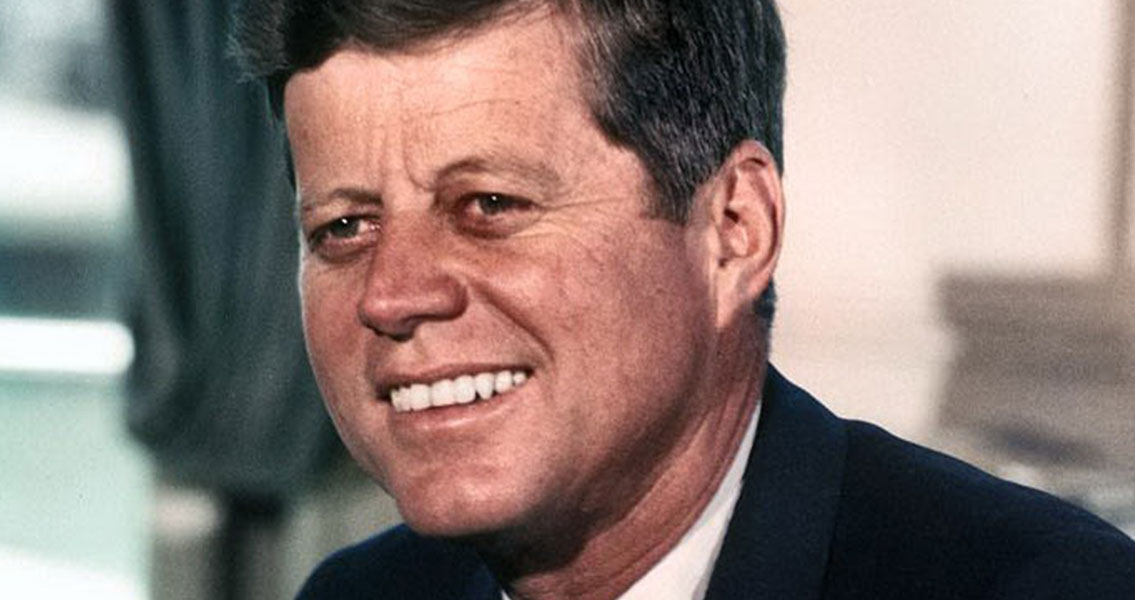<![CDATA[Saturday marks the 51st anniversary of the death of John Fitzgerald Kennedy. The 35th US President was assassinated while driving through Dallas, Texas, in an open top convertible. The events of Friday 22nd November 1963 stand as one of the most infamous days in American history, the details of which have been analysed in microscopic detail since. In Autumn 1963 Kennedy and his campaign team were preparing for the next presidential election, scheduled for the following year. By this point Kennedy hadn't officially announced his intentions to run in the next campaign, however his popularity and success meant it seemed inevitable. This same popularity also meant that re-election seemed highly likely. In September he had travelled through nine western states in a week, and started to talk about themes such as world peace, education and national security - a likely precursor to an announcement about a presidential run the following year. On November 12th Kennedy held a planning meeting with his advisors about the Democrats election campaign. Although he still hadn't officially announced his intention to run, it was decided that Florida and Texas were pivotal states where the Democrats had to build support. It was agreed that the president would visit Texas by the end of the month, the swing state that appeared the hardest to win over. On 21st November the president and his wife Jacqueline departed Washington to start a five city tour of Texas. The Texan Democrat Party leaders were locked in a public feud at this point, something which needed to be resolved quickly to rescue the image of the party in the state. Kennedy intended to mediate the dispute, and present the party as a united front to the people of Texas. The state was also home to a small but vocal group of right-wing extremists, who were creating tension. Indeed, in October 1963 the US Ambassador to the UN, Adlai Stevenson, had been physically attacked after giving a speech. Kennedy hoped that a presidential visit would mark an important act of defiance against the extremists. By the time they reached Dallas, Mr and Mrs Kennedy had already visited the cities of Fort Worth and San Antonio. Their motorcade made its way through central Dallas, with the Texas Governor John Connally and his wife also in the president's car. As they reached Dealey Plaza shortly after midday, three shots were fired from the Texas Book Depository, fatally wounding Kennedy and injuring Connally. The shooter is alleged to have been Lee Harvey Oswald, a former US Marine who had travelled to the Soviet Union in the 1950s. He married a woman from Minsk and had a daughter with her, later returning with them to the US. It is believed that he had tried to assassinate US Army general Edwin Walker in April 1963, an outspoken anti-communist and far right extremist. Harvey was only caught after critically wounding a Police Officer, J.D. Tippitt, forty five minutes after the shooting. It was only realised later that he had also shot Kennedy. As Harvey was brought through the jail of Dallas Police Department on 24th November, he was shot and killed by nightclub owner Jack Ruby. At 2:39pm on the 23rd, Lyndon B. Johnson, Kennedy's vice president, was sworn in as president aboard Airforce One, with Kennedy's widow stood alongside him. His first act as president was to declare the 25th November an official day of mourning. The Kennedy assassination sent shockwaves throughout the US. Within ten minutes of the shots being fired, the major US TV networks abandoned their scheduled programs to focus on covering the assassination, and normal service wouldn't resume for another four days. Even now, the event is still the subject of sensational conspiracy theories and dramatisations. Kennedy is regarded as the first president to effectively use the mass media to win an election. It's no surprise that his death inspired the same media saturation. ]]>
Fifty One Years Since the Death of JFK
